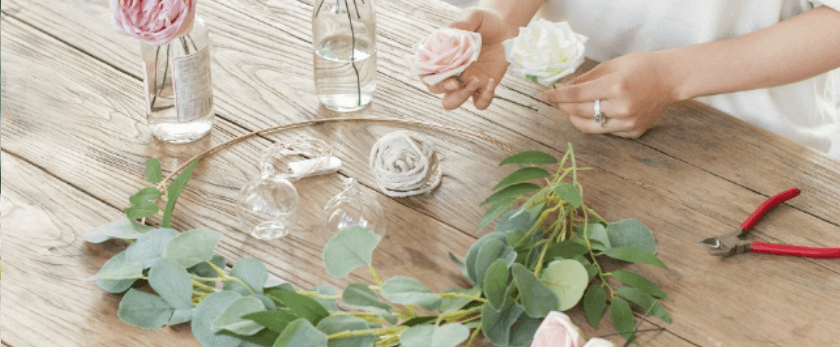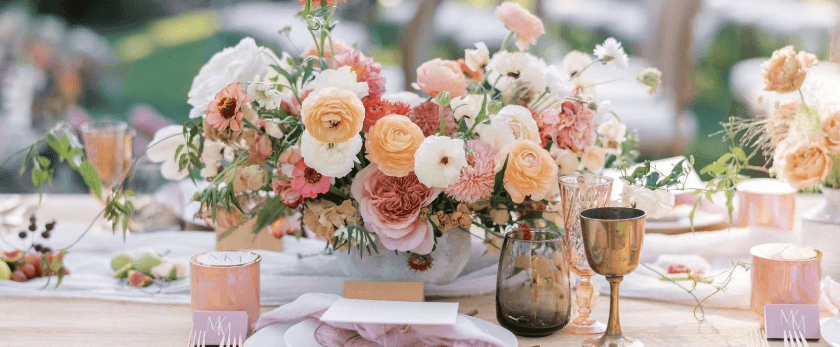In today's world, where environmental concerns are at an all-time high, it's important to make conscious choices that have a positive impact on the planet. One area where we can make a significant difference is in our home decor, specifically with centerpieces. These decorative pieces are often used for special occasions, events, or as a focal point in our homes. However, many store-bought centerpieces are made with materials that are harmful to the environment and contribute to pollution and waste. The good news is that there is a simple and sustainable solution – making your own homemade centerpieces.
Why Store-Bought Centerpieces are Bad for the Environment
Before we dive into the benefits of making your own centerpieces, let's first understand why store-bought ones are harmful to the environment. Most store-bought centerpieces are made with non-biodegradable materials such as plastic, foam, and synthetic fabrics. These materials take hundreds of years to decompose, and when they do, they release harmful chemicals into the environment. Additionally, the production of these materials contributes to carbon emissions and pollution.
Moreover, store-bought centerpieces often come packaged in plastic or other non-recyclable materials, adding to the already mounting waste problem. And once the centerpiece has served its purpose, it usually ends up in the landfill, where it will continue to harm the environment for years to come.

The Benefits of Making Your Own Centerpieces
Making your own centerpieces not only reduces your carbon footprint but also allows you to get creative and add a personal touch to your home decor. Here are some of the benefits of making your own centerpieces:
1. Environmentally Friendly Materials
When you make your own centerpieces, you have control over the materials used. You can opt for environmentally friendly materials such as natural fabrics, recycled paper, or biodegradable materials. These materials are not only better for the environment, but they also add a unique and natural touch to your centerpiece.
2. Cost-Effective
Store-bought centerpieces can be expensive, especially if you're hosting a large event or have multiple tables to decorate. Making your own centerpieces can save you money, as you can use materials that are easily accessible and affordable. You can also repurpose items you already have at home, reducing the need to buy new materials.
3. Customizable
When you make your own centerpieces, you have the freedom to customize them to your liking. You can choose the colors, textures, and overall design to match your personal style or the theme of your event. This adds a personal touch and makes your centerpiece stand out.
4. Educational and Fun
Making your own centerpieces can be a fun and educational activity for both adults and children. It allows you to learn new skills and get creative while also teaching the importance of sustainability and responsible consumption.
What You'll Need to Make Your Own Centerpieces
The materials needed to make your own centerpieces will vary depending on the design and style you choose. However, here are some basic materials that you may need:
- A base for your centerpiece (e.g., a vase, jar, or basket)
- Natural or recycled materials (e.g., flowers, leaves, twigs, pinecones, recycled paper)
- Scissors
- Glue or tape
- Paint or markers (if you want to add color)
- Optional: Ribbons, twine, or other decorative elements
How to Make Your Own Centerpieces
Now that you have an idea of why making your own centerpieces is beneficial and what materials you'll need, let's dive into the steps to make your own sustainable centerpiece.
Step 1: Choose Your Base
The first step is to choose a base for your centerpiece. This could be a vase, jar, or any other container that you have at home. You can also get creative and use unconventional items such as a teapot, a mason jar, or a wooden box.
Step 2: Gather Natural or Recycled Materials
Next, gather natural or recycled materials to use as the main element of your centerpiece. This could be flowers, leaves, twigs, pinecones, or even recycled paper. You can also use items you already have at home, such as old magazines or newspapers.
Step 3: Prepare Your Materials
If you're using fresh flowers or leaves, make sure to trim them and remove any excess leaves or thorns. If you're using recycled paper, cut it into strips or shapes to create a unique design. You can also paint or color the materials if you want to add some color to your centerpiece.
Step 4: Assemble Your Centerpiece
Now it's time to assemble your centerpiece. Start by placing your base in the center of your table. Then, add your natural or recycled materials, arranging them in a way that looks visually appealing. You can also add ribbons, twine, or other decorative elements to add a finishing touch.
Step 5: Enjoy Your Sustainable Centerpiece
Once you're happy with the design, your homemade centerpiece is ready to be displayed and enjoyed. Not only does it add a beautiful touch to your home or event, but it also serves as a reminder of your commitment to a greener, more sustainable lifestyle.
Responsible Disposal of Your Centerpiece
When your centerpiece has served its purpose, it's important to dispose of it responsibly. If you used natural materials, you can compost them or return them to nature. If you used recycled materials, make sure to recycle them properly. And if you used a base that can be reused, save it for your next centerpiece project.
Conclusion
In conclusion, making your own centerpieces is a simple and sustainable solution for a greener future. By using environmentally friendly materials and getting creative, you can reduce your carbon footprint and contribute to a cleaner, healthier planet. So the next time you're in need of a centerpiece, skip the store-bought options and try making your own – your wallet and the planet will thank you.










